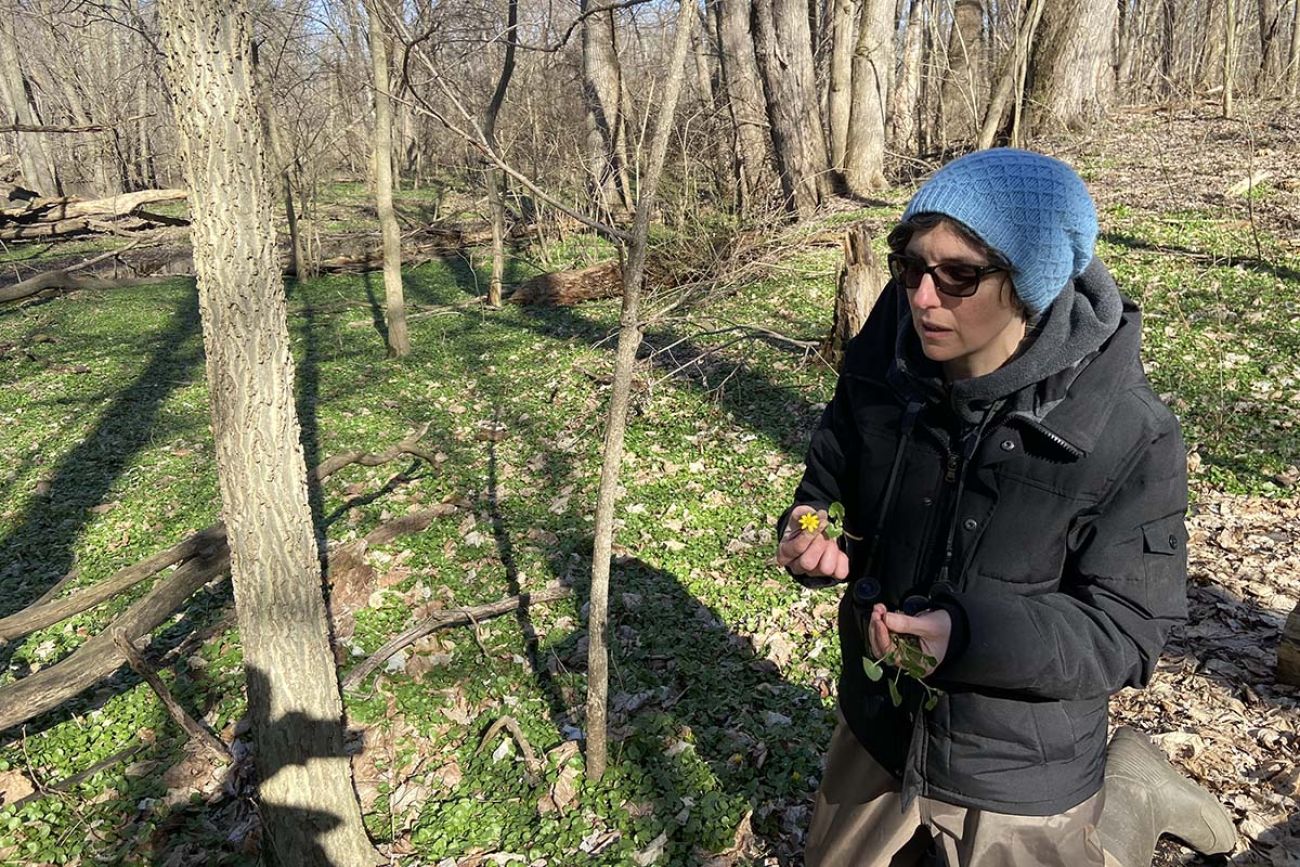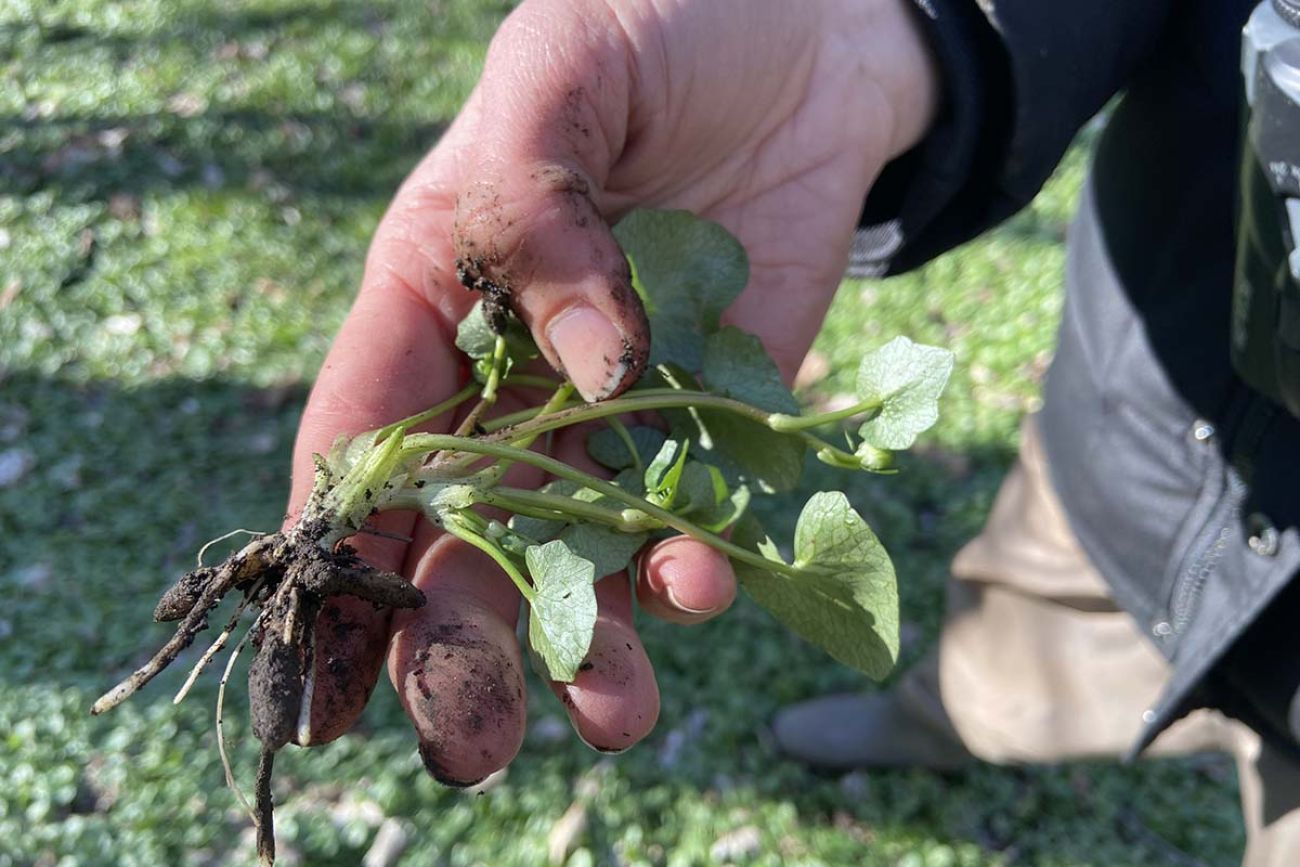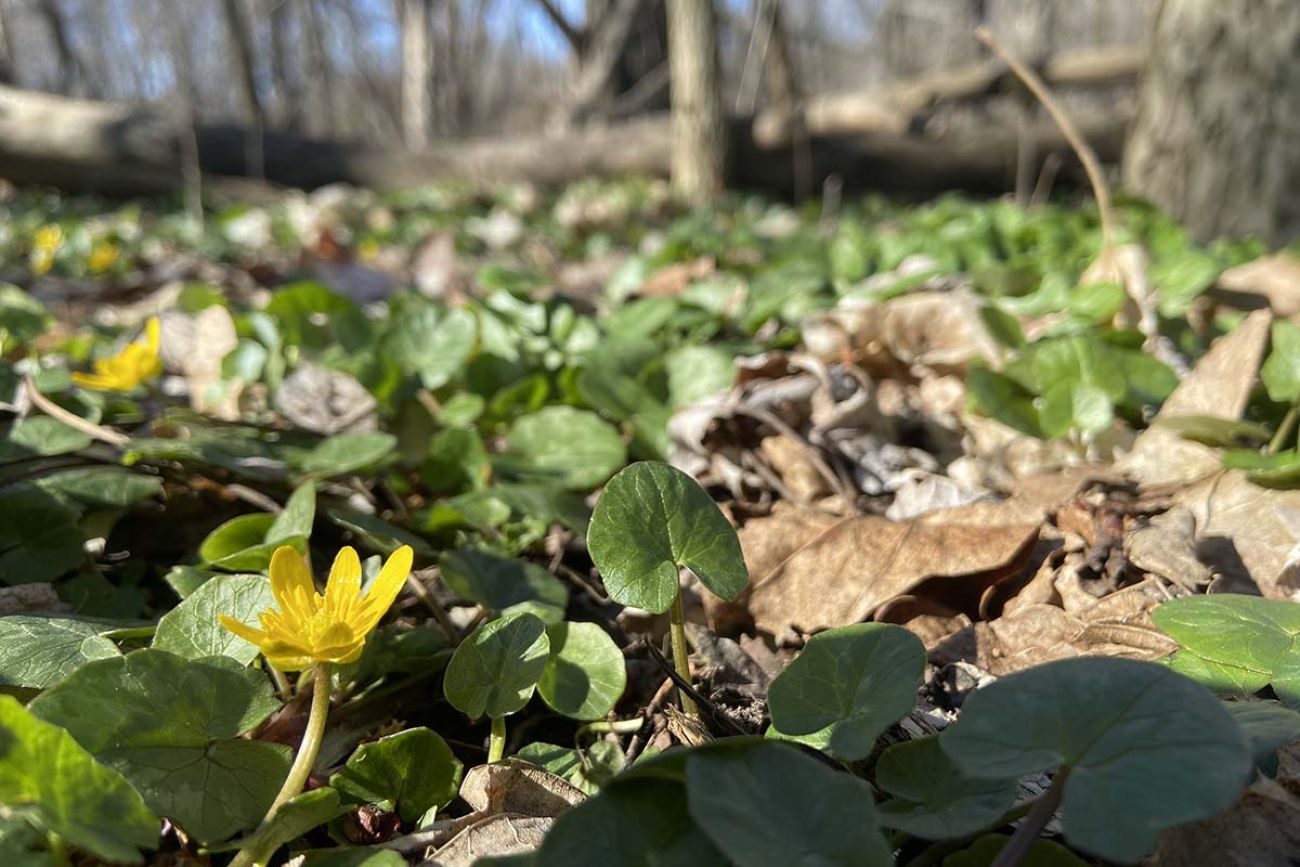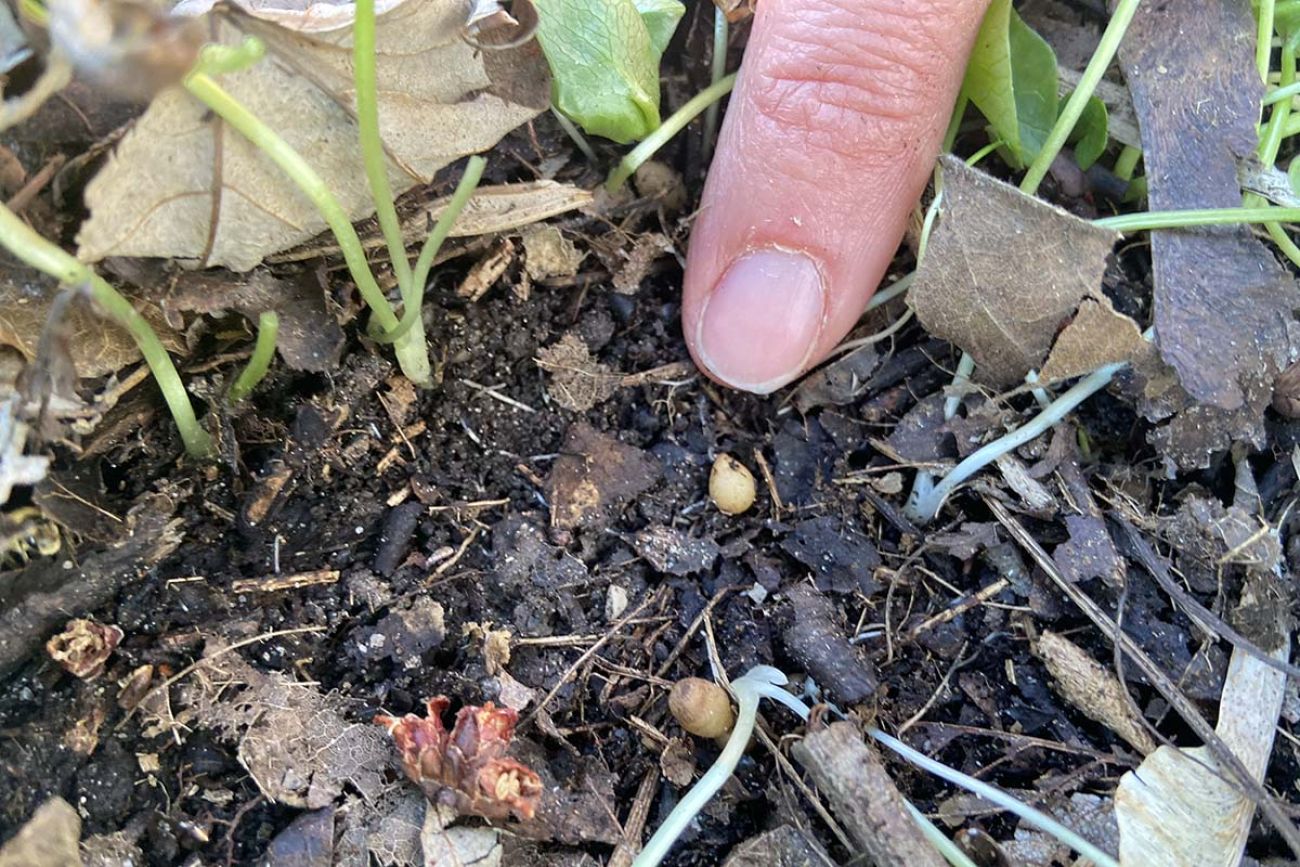Meet the invasive plant that’s killing off Michigan’s spring wildflowers


- Lesser celandine is spreading rapidly in lower Michigan, prompting an effort to combat the invasive plant
- Despite its threats, the plant is legal to buy and sell in Michigan
- A small group of advocates is pushing for regulations, while urging gardeners to be alert
A destructive wetland plant from Europe is rapidly spreading in Michigan’s forests, choking out native wildflowers, starving out native insects and eroding river banks.
Its march across lower Michigan spells peril for iconic spring blooms like trilliums, bloodroot and bluebells.
Yet for now, the invasive plant known as lesser celandine remains unregulated in Michigan — and legal to buy and sell.
Advocates are calling on the state to ban the plant, while a small group in mid-Michigan works desperately to contain an outbreak occurring in the Grand River watershed.
They have their work cut out for them. The plant, which is in the buttercup family, can reproduce in three different ways, making it capable of quickly colonizing an entire forest. Herbicide treatments are only possible during a short window in the early spring.
Its shiny green leaves and dainty yellow flowers are deceptively pretty.

But once lesser celandine takes hold, “it just smothers everything out,” said Rachel Cuschieri-Murray, executive director of the Eaton Conservation District, one of several organizations involved in the effort.
Related:
- With new invasive carp money, the Great Lakes learns from past invasions
- Armed with flea meds, Michigan defends hemlock trees against a deadly invader
- Inside the Michigan lab where scientists raise killer bugs to save trees
- Watch Bridge’s discussion about Great Lakes invasive species
Brought to the U.S. as an ornamental plant more than 150 years ago, lesser celandine soon escaped into eastern forests, replacing species-rich understories with dense green mats that bloom in early spring, and then die off and leave bare mud behind.
Although the plant likely arrived in Michigan gardens decades ago, its proliferation in the state’s forests has been more recent.

Only in the last several years did Lansing area advocates realize it had escaped into local parks and natural areas. By now, it has taken over large swaths from Okemos west to Grand Rapids.
Data from the Midwest Invasive Species Information Network shows it’s also present around metro Detroit, Ann Arbor, Grand Rapids and Kalamazoo.
Unlike native spring wildflowers, the wetland-loving plant (whose botanical name is ficaria verna) brings few if any ecological benefits.
“It’s not food, habitat or shelter to anything that’s native to this area,” said Cuschieri-Murray.
Lesser celandine leaves offer no nutrition to native insects at the base of the food chain. When those insects die off, the impact ripples upward.
And because lesser celandine emerges earlier in the spring than most native plants, it wins the battle for sunlight. The foliage then dies back by late May, leaving bare mud behind. That, in turn, makes the soil vulnerable to erosion.
It’s also great at spreading, capable of reproducing through seeds, tubers, and BB-sized “bulbets” that form along the plant’s stem and scatter easily during floods.

That allows lesser celandine to quickly spread downstream, as it has done along the Grand River and tributaries.
That includes places like Grand Woods Park, a 128-acre park west of Lansing where trilliums typically blanket the forest floor each spring, and the Portland State Game Area, home to a rare protected trillium species. Lesser celandine has now taken over large areas of both preserves.
A push for state intervention
With limited human and financial resources, the Lansing-area group attempting to contain the outbreak faces an uphill battle.
It doesn’t help that Michigan hasn’t put restrictions on lesser celandine’s sale and import or declared it an invasive species, a step taken by nearby states including Ohio, Illinois, Wisconsin and Pennsylvania.
Susie Iott, invasive species program specialist at the Michigan Department of Agriculture and Rural Development, said prohibiting sales in Michigan would require a multi-step process that begins with a risk assessment, followed by approval from both the Michigan Commission of Agriculture and Rural Development and Natural Resources Commission.
Lesser celandine is in line for an assessment, Iott said in an email, along with “many other plants, insect, fish, etc. species.”
Iott said state officials may also add the plant to a non-regulatory invasive species watch list and have already provided funding for groups working to combat lesser celandine.
Lesser celandine joins a long list of problem plants that remain legal in Michigan, despite posing threats to native landscapes.
The slow process to regulate them frustrates Carolyn Miller, invasive plant species coordinator at Michigan State University’s W.J. Beal Botanical Garden.
“Somehow we've got to get Michigan on board with banning these things,” Miller said. “We’re going to destroy our native habitats, and our woods, and our everything if we don't start taking a stand.”
Tracking the outbreak
The first step toward containing the outbreak is tracking down its source.
On a recent afternoon, a small group of advocates paddled down the Red Cedar River from Williamston, hoping to find ground zero. They saw no lesser celandine in a several-miles-long stretch upstream of Okemos — a hopeful sign.
Once they find the outbreak’s source, they hope to cut it off with herbicide treatments, then begin working their way down the river to other affected areas.
Total eradication appears unlikely. Homeowners may be able to dig up small patches, but larger outbreaks require meticulous treatment with controversial weed-killers like glyphosate (the active ingredient in Roundup) during a narrow window in early spring, when the plant has sprouted but has not fully flowered.
But advocates say it’s worth trying.
Containing the outbreak wouldn’t just benefit the Grand River watershed: So far, there have been no reported sightings north of the Muskegon area. But without action, lesser celandine could soon spread to northern Michigan, advocates warn.
In Pennsylvania, where lesser celandine is now widespread, the government spends countless hours and untold dollars combatting the species.
“Early detection and rapid response is key,” said Kelly Sitch, a forest biologist with the Pennsylvania Department of Conservation and Natural Resources.
“If it’s a small patch near a creek, that’s a reasonable population to control,” he said. “Once it's in four-acre mats, that's a decade-long project.”
Home gardeners play a part, too, Cuschieri-Murray said. Lesser celandine isn’t the only invasive species that remains unregulated in Michigan. That means the next crisis is likely hidden in plain sight, amid the rows of plants for sale at Michigan garden centers.
A simple Google search can help shoppers avoid buying problem plants.
Cuschieri-Murray recommended searching for the plant’s name, plus the word “invasive.”
“Just because they sell it, doesn’t mean it’s beneficial or even safe,” she said.
Michigan Environment Watch
Michigan Environment Watch examines how public policy, industry, and other factors interact with the state’s trove of natural resources.
- See full coverage
- Subscribe
- Share tips and questions with Bridge environment reporter Kelly House
Michigan Environment Watch is made possible by generous financial support from:
Our generous Environment Watch underwriters encourage Bridge Michigan readers to also support civic journalism by becoming Bridge members. Please consider joining today.
See what new members are saying about why they donated to Bridge Michigan:
- “In order for this information to be accurate and unbiased it must be underwritten by its readers, not by special interests.” - Larry S.
- “Not many other media sources report on the topics Bridge does.” - Susan B.
- “Your journalism is outstanding and rare these days.” - Mark S.
If you want to ensure the future of nonpartisan, nonprofit Michigan journalism, please become a member today. You, too, will be asked why you donated and maybe we'll feature your quote next time!




